How to Grow Monarch Butterflies with a Homestead Garden
Create a thriving monarch butterfly garden with milkweed and nectar plants. Learn how to raise and grow monarchs on your homestead.
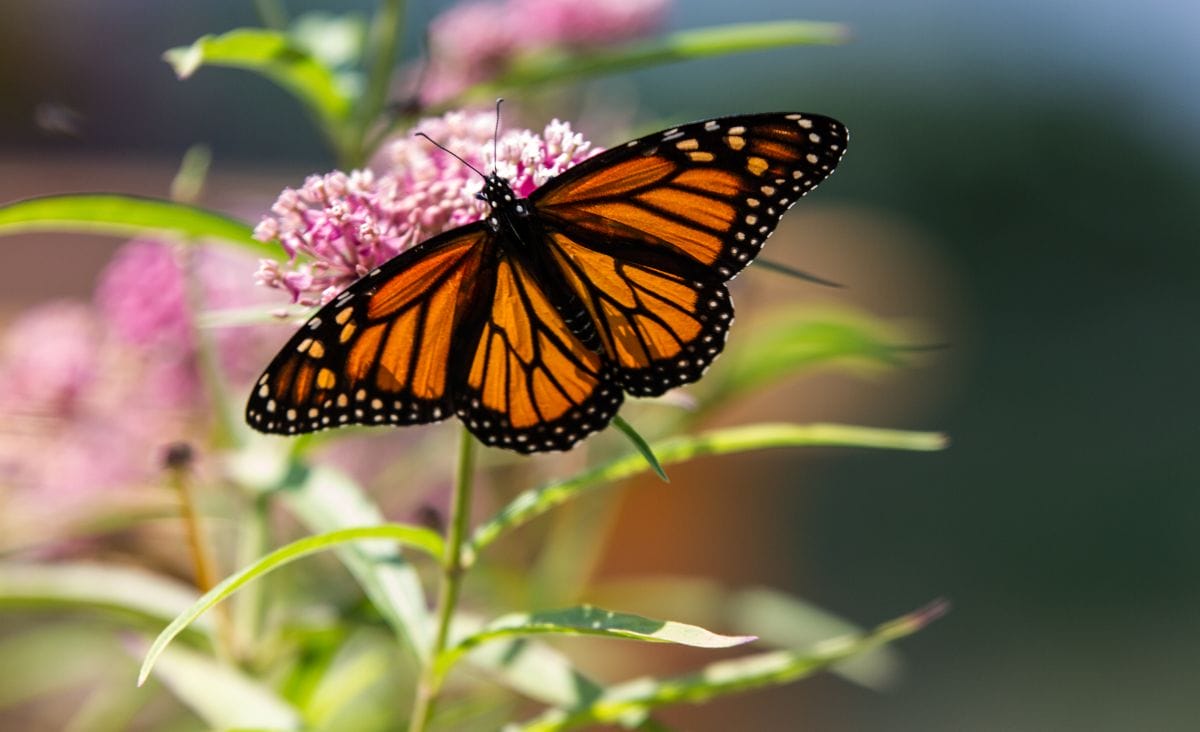
Every June, usually late in the month, I look out over my garden and watch the first monarch butterflies flutter in. It’s magical. But did you know these beautiful pollinators are struggling to survive? That’s where we, as homesteaders, can step in.
By planting a monarch-friendly garden, you can create a haven that attracts and sustains these vital pollinators. In this post, I’ll walk you through everything you need to know about raising monarch butterflies, growing plants that sustain them, and building a homestead garden that supports their life cycle. Let’s dig into how you can make a real difference right in your backyard.
Why Monarch Butterflies Need Our Help
Monarch butterfly populations have declined dramatically over the years. Habitat destruction, pesticide use, and climate change have all played a role. As a homesteader, you have a unique opportunity to create a garden that helps reverse this trend. I’ve seen firsthand how even a small plot of land can become a sanctuary for monarchs.
The Monarch Butterfly Life Cycle
To create a garden that truly supports monarch butterflies, it helps to understand their life cycle:
- Eggs: Laid on milkweed plants, the sole food source for monarch caterpillars.
- Caterpillars: After hatching, they feed exclusively on milkweed.
- Chrysalis: Caterpillars form a chrysalis as they undergo metamorphosis.
- Butterflies: Adult monarchs rely on nectar plants for food and return to milkweed to lay eggs.
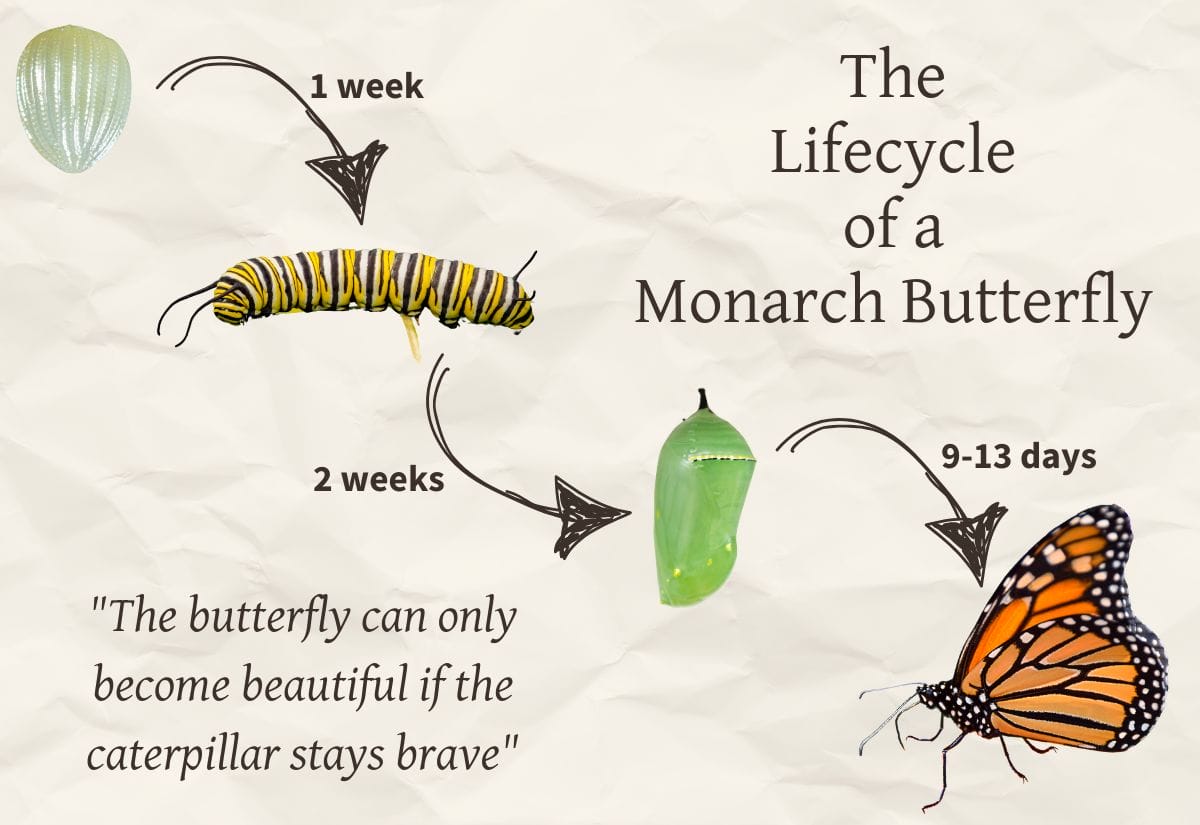
By tailoring your garden to meet these needs, you can support monarchs at every stage of their life.
Essential Plants for a Monarch Garden
To create a thriving habitat for monarch butterflies, it’s important to include plants that support their entire lifecycle. From host plants for caterpillars to nectar-rich flowers for adults, your garden can become a vital sanctuary for these pollinators.
Milkweed: The Foundation of Monarch Survival
Milkweed is non-negotiable if you want to attract monarchs. I recommend native milkweed varieties, as they’re best suited for local monarch populations. Here are a few options to consider:
- Common Milkweed: Perfect for most homesteads; hardy and easy to grow.
- Swamp Milkweed: Thrives in wetter soil conditions.
- Butterfly Weed: A compact, vibrant option for smaller gardens.
Tip: I plant milkweed along the edges of my garden to give monarchs space to lay eggs away from other activities.
Nectar Plants for Adult Monarchs
To sustain adult butterflies, include a variety of nectar-rich flowers that bloom throughout the growing season. My go-to options are:
- Zinnias: A burst of color that attracts monarchs and other pollinators.
- Coneflowers: Drought-tolerant and a monarch favorite.
- Black-Eyed Susans: Hardy and long-blooming, perfect for late summer.
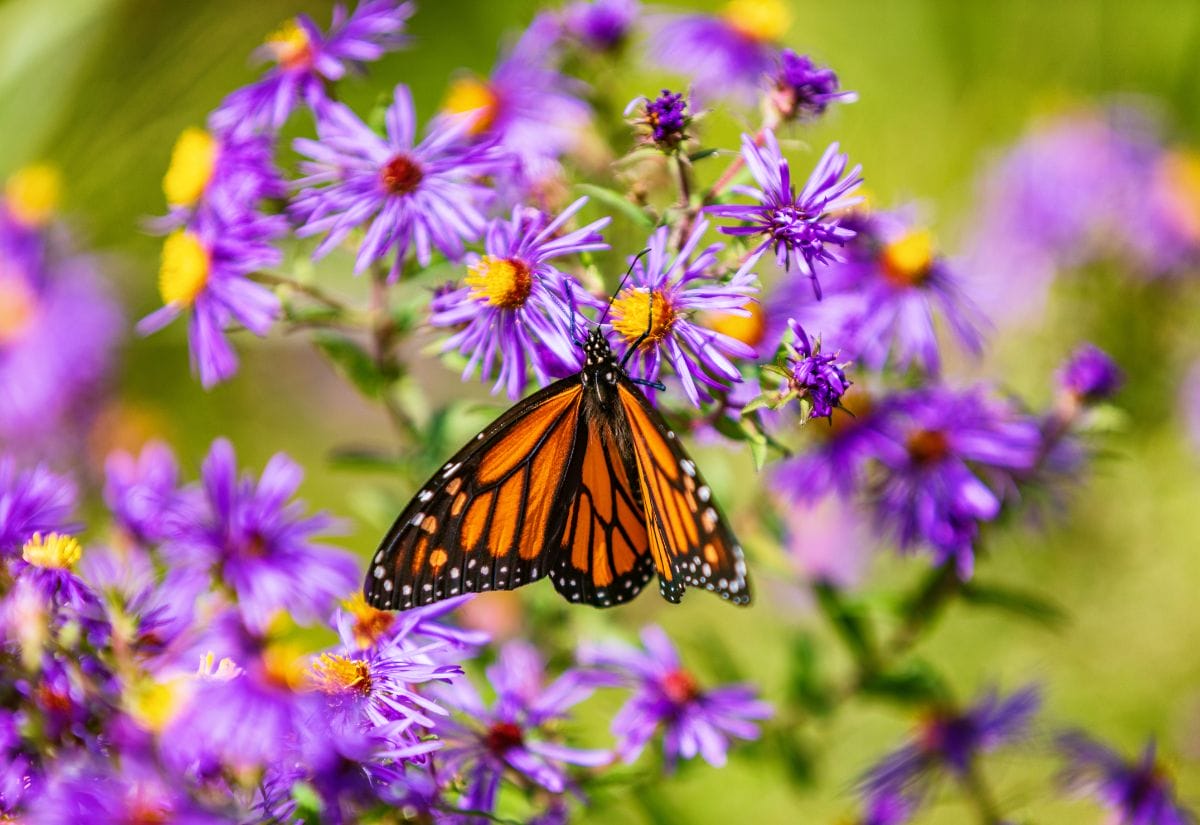
How to Design a Monarch-Friendly Garden
When planning your monarch-friendly garden, choosing the right location is essential. Monarchs thrive in sunny areas, so aim for a spot that receives at least 6–8 hours of sunlight daily. This ensures the plants they rely on, like milkweed and nectar-rich flowers, grow strong and healthy while providing the warmth butterflies need for their activities. If your garden has partial shade, try planting sun-loving flowers in the brightest areas and reserve shaded spots for companion plants that benefit the garden ecosystem.
It’s also important to avoid using pesticides in your garden. Monarchs are incredibly sensitive to chemicals, and even small amounts can harm them. Instead, opt for natural pest control methods such as companion planting, introducing beneficial insects like ladybugs, or using homemade organic sprays. By avoiding synthetic pesticides, you create a safer environment not just for monarchs but for other pollinators and beneficial insects as well.
When planting, arrange your flowers and milkweed in clusters rather than scattering them throughout the garden. Grouping plants together makes it easier for monarchs to locate food and shelter, especially during their migration. A dense, layered approach to planting also provides better protection from wind and predators, making your garden a more appealing and functional habitat for these butterflies.
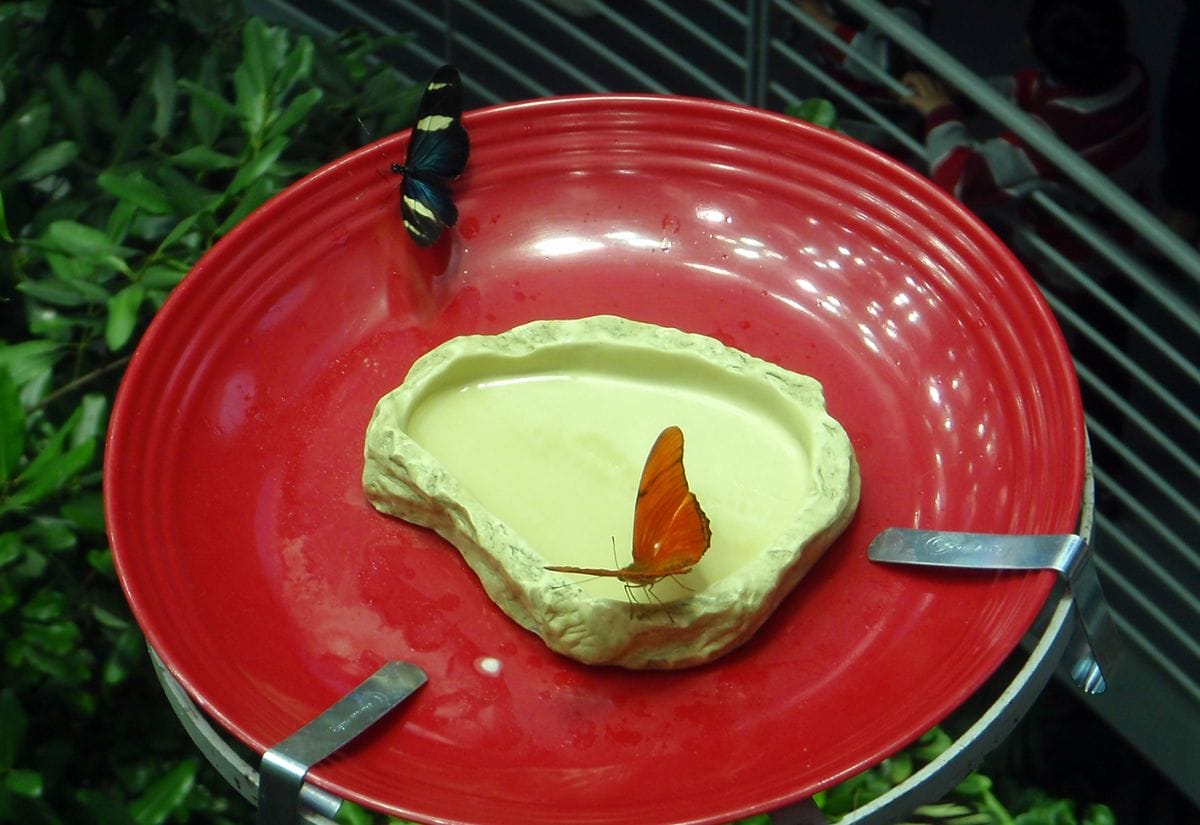
Finally, don’t forget to provide a water source for monarchs. Butterflies drink from shallow water, so you can set up a simple and effective watering station by filling a saucer with clean water and adding pebbles or stones for them to perch on. This not only helps monarchs stay hydrated but also attracts other pollinators, contributing to a lively and balanced garden. Remember to change the water regularly to prevent mosquito breeding and ensure a fresh, clean source for your winged visitors.
Alternative Ideas for Smaller Spaces
If you don’t have room for a large garden, you can still create a welcoming space for monarch butterflies with a few creative solutions. Potted milkweed is an excellent option for patios, balconies, or small yards. As long as the pots are large enough and placed in a sunny spot, these containers can provide the vital habitat monarchs need for laying eggs and feeding caterpillars. You can also incorporate herbs like dill and fennel, which not only attract other pollinators but also complement monarch habitats by diversifying your plant offerings.
For those with even smaller spaces, consider creating a vertical garden with hanging pots or wall planters filled with nectar-rich flowers. Window boxes are another great choice, allowing you to plant a combination of milkweed and colorful blooms right outside your window. Even a few small planters can make a big difference, showing that any space, no matter how small, can contribute to supporting monarch butterflies and other pollinators.
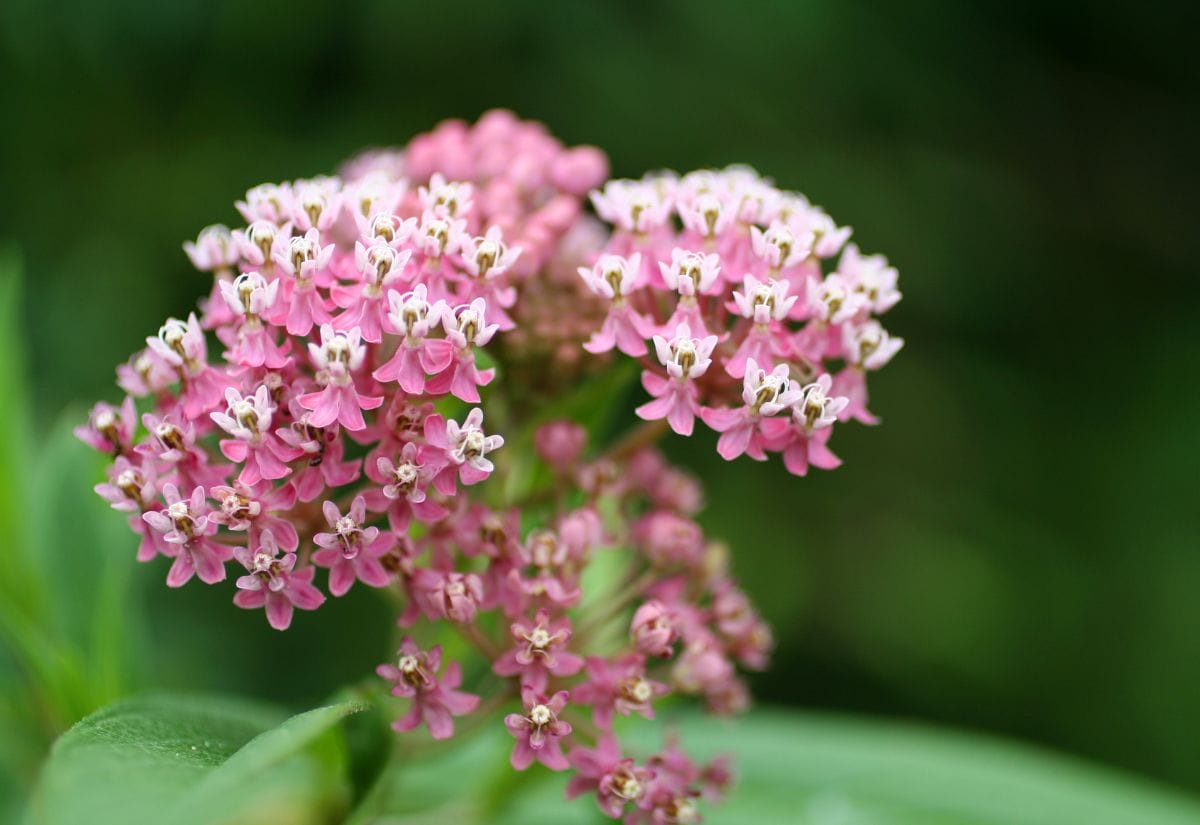
Caring for Your Monarch Garden
- Weeding: Keep weeds in check, but be careful not to disturb milkweed plants or eggs.
- Replenishing Plants: Some milkweed varieties are perennial, but others may need to be reseeded yearly.
- Seasonal Cleanup: Leave dead plant stems over winter to shelter chrysalis or overwintering butterflies.
Monarch Butterfly Garden Questions Answered
To get started on your monarch-friendly garden, consider using a seed kit specifically designed to support these incredible pollinators. With a mix of open-pollinated wildflowers, milkweed, and a blend of annuals and perennials, it’s an easy way to provide the essential plants monarchs need—all in one convenient package.
Love this idea? Pin it to your garden board and save it for later!
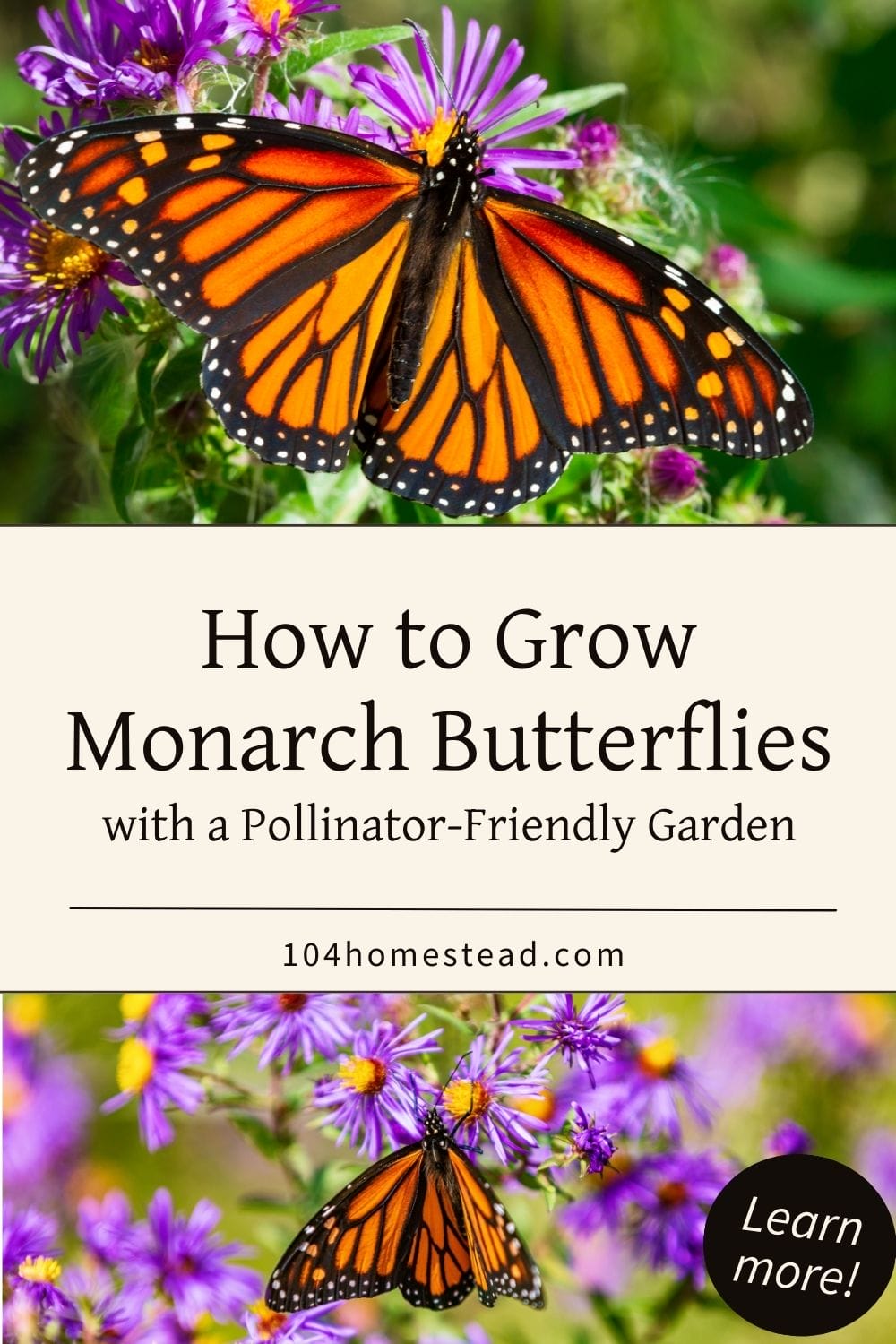
Planting a monarch-friendly garden is one of the easiest and most rewarding ways to support these incredible pollinators. With just a bit of effort, you can create a thriving habitat that helps monarch populations recover—and enjoy the beauty of these butterflies in your yard.
If you’re looking to expand your efforts beyond supporting monarch butterflies, consider ways to make your entire yard and garden more sustainable. Planting flowers that attract a variety of pollinators can create a thriving ecosystem, and incorporating herbs with multiple benefits is a great way to boost your garden’s productivity while working in harmony with nature.
Have you planted a monarch garden? I’d love to hear your tips and stories in the comments below!





Did they open this free kit up again?! I’m eager to start!
Yes I just found it here https://www.nwf.org/Butterfly-Heroes/Getting-Started
I would love to have one
We live in Southern California and would love to start a Monarch butterfly garden. My twins have a vegetable garden but don’t know what kind of milkweed to plant for butterflies. The Monarch represents my father that has passed when I was 18 so it’s very special to me.
Wanting to get started in Oakridge, Oregon. My three children are excited after waching the documentary “Flight of the Butterflies”.
Hi– I have several milkweed plants in my yard. (they came up on their own so I don’t know what kind they are). They didn’t bloom last year so my question is – How do you get they to bloom??
Depending on when they were seeded, they may not bloom their first year. They most likely will all on their own the second year.
Is it too late to get a kit?
Yes, they stopped offering them in the fall of 2015, but I’m hoping they will open it again this spring.
I live on an acreage and do daycare would love the kit to do with them.
I planted 4 common milkweed plants from Lowes because I was impatient and wanted butterflies right away. Within 2 months I’ve had an endless amount of caterpillars hatching and devouring my milkweed. Ive had countless butterflies hatch and am looking forward to next year when I will have more plants!
What wonderful results! I am so happy to hear it!
How do I get a kit. I would pay for it.
If you are in gardening zones 5-9, this looks like a good mix of seeds for your garden: http://amzn.to/1V22sja
For warmer climates, here’s a good one: http://amzn.to/1V22V4N
For colder climates, here’s an option: http://amzn.to/1Kq8jKd
And no matter which seed mix you choose, if you want to attract monarchs, you’ll want plenty of milkweed seed: http://amzn.to/1gBxkcJ
i planted milkweed three years ago..this is the first year it looks established..I’ve only seen one monarch..I’ve not lost hope…my sister has plenty in NW Louisanna..she also has fennel and butterfly weed…my fennel didn’t make it..at least it didn’t last long.i hope this program continues next year.Thanks Bonnie..ps please email me when program starts up again!!
I hope you end up with lots of butterflies. I think it takes a few years to establish a bunch. You know, they have to tell their friends 🙂
When do Monarchs pass through North West Florida? I live in Okaloosa County.
From what I’ve been reading, I’d say you can expect them in your area from August to September.
I would love a kit for my 5th grade class.
According to the NWF’s website, you can participate as a classroom as well. That would be a fun thing for 5th graders 🙂
We’re taking the pledge!
I want to do this!